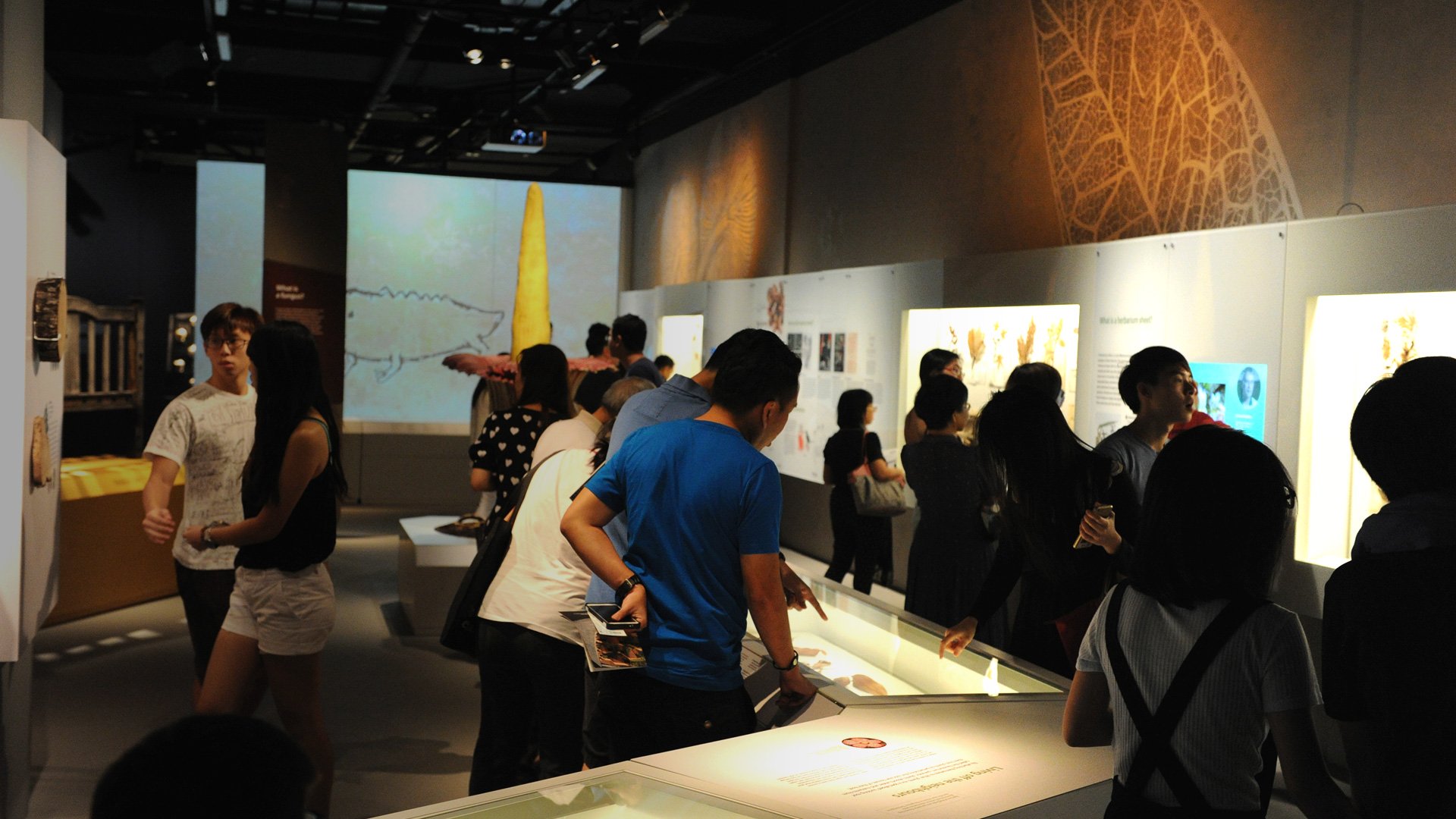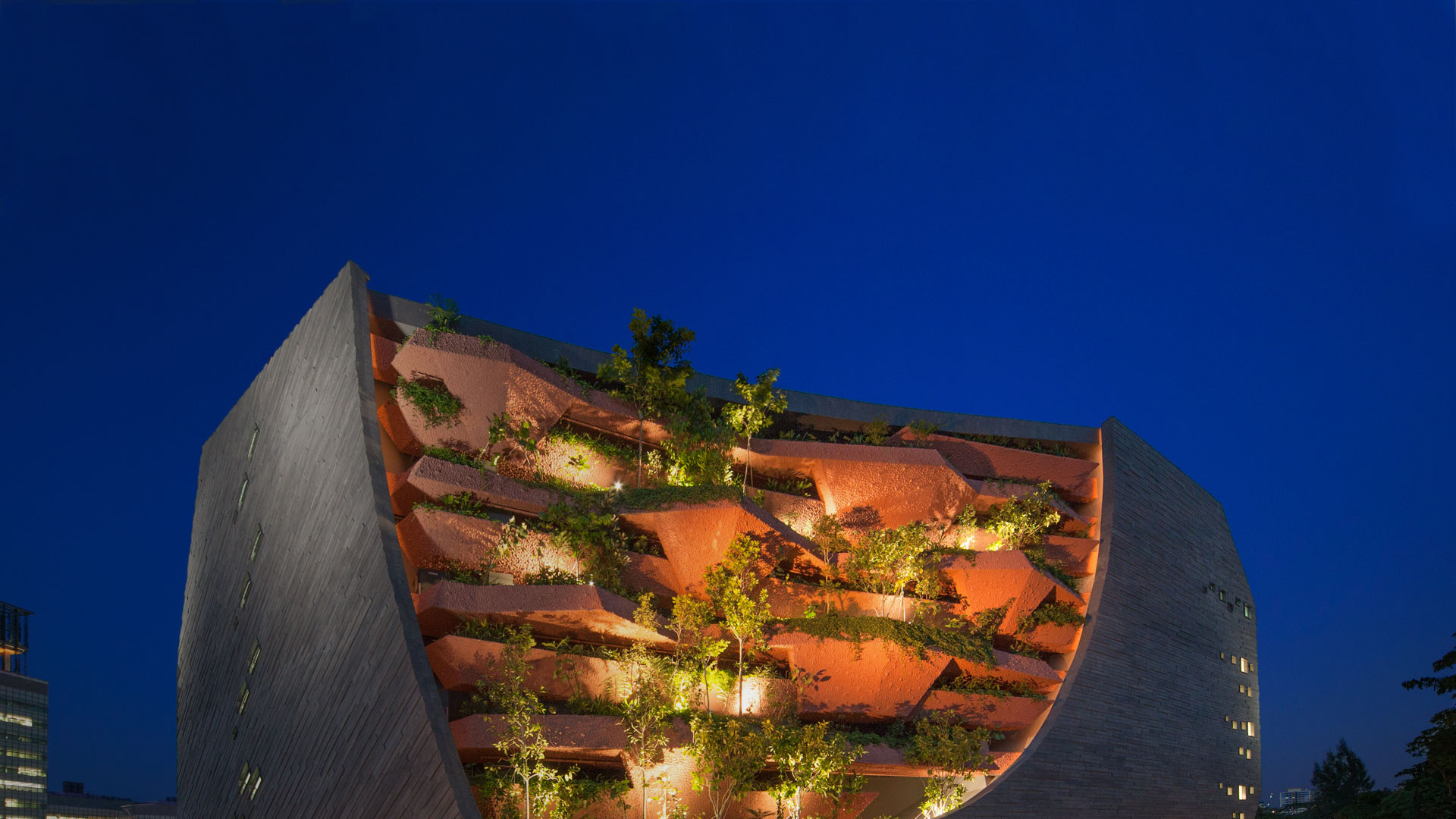Introduction
The majority of the zoological specimens in the LKCNHM originate from Southeast Asia, some dating back to 1840. In the early days of the Raffles Museum, the collection comprised largely of contributions from members of the public.
After 1890, the collection increased not only through donations but also through the active collecting efforts of the museum staff. In the early 20th century, British and other European curators of the museum contributed actively to build up the collection by organising expeditions to various parts of Southeast Asia. The first ever expedition was to the Singapore islands of Pulau Brani and Pulau Blakang Mati (present Sentosa Island) led by its then director, Dr R. Hanitsch in 1895. Official links between the Raffles Museum, Selangor Museum and Perak Museum facilitated many joint expeditions in Indonesia, Malaysia, Thailand, Laos, Cambodia, Vietnam, and many adjacent islands. Large numbers of specimens were hence acquired and many of these were deposited at the Raffles Museum.
Some collections were acquired through collaborative research, donations from the public and purchases. The Raffles Museum also conducted specimen exchange programs with other institutions. These include the Sarawak Museum (Malaysia), Muzium Zoologicum Bogoriense (Indonesia), Natural History Museum (London, U.K.), American Museum of Natural History and National Museum of Natural History (U.S.A.), Nationaal Natuurhistorisch Museum (Leiden, The Netherlands), and Bombay Natural History Society (India). One of the most significant exchange was arranged in 1926 by Dr H. C. Robinson, then director of the Federated Malay States Museums. He sent the bird and mammal collections of the Selangor Museum in return for the Raffles Museum’s insect collection.
Certain reference material, although cited as having been deposited in the Raffles Museum, cannot be traced in Singapore today. In the past, the expatriate directors used to send types and duplicates of their collections to the Natural History Museum (then British Museum of Natural History) and other museums in Europe and the United States. They felt that specimens would keep better there in the cooler, drier climate, and more importantly, that the specimens would be more accessible to western scientists. Some specimens, including types, were lost during the Second World War. It is possible that some material could have perished with the doomed ship that F. N. Chasen took to flee Singapore in 1942. It also appears that some of the display specimens disappeared when the zoological section of the Singapore National Museum was transferred to the Singapore Science Centre in 1972.
When the zoological collection of the National Museum was transferred to the University in 1972, it also incorporated the zoological collections of the former University of Singapore and the Nanyang University. These include D. S. Johnson’s freshwater fish and crustacean collections; J. L. Harrison’s mammal collection; A. K. Tham’s, C. C. Lindsey’s and Samuel Tay’s fish collections; M. Nadchatram’s mite collection; and D. H. Murphy’s entomological collection. In 1983, about 2,000 fish specimens from the Andaman Sea and the South China Sea were received from the Singapore Marine Fisheries Research Department of the Southeast Asian Fisheries Development Centre (SEAFDEC). In 1997, a large collection of freshwater zooplankton samples was received from C. H. Fernando. Many specimens were also contributed by research students and staff members of the Department of Biological Sciences (National University of Singapore); members of the public; and from exchange programmes with scientists, and other research institutions and museums.
Many groups of animals are very well represented in the LKCNHM. Some of these are among the best in the world. Most of these are irreplaceable and are priceless historical specimens. The proper documentation and computerisation of these valuable collections is urgently needed for quick and easy retrieval for users. It will also reduce the unnecessary handling of specimens, especially century old specimens which are very brittle and at high risk of being damaged. So far, part one of the bird catalogue containing 3,825 records has been entered and published. The process of computerisation is often slow because of the old, hand-written labels which have hand-writing which is not easily deciphered.
Most mammals, birds and the larger reptiles are preserved dried as skins. Mammal skulls are also kept alongside the respective skins. Insects, molluscs and hard corals are maintained both in dried and wet forms. Microscopic creatures like mites and parasites are permanently mounted on glass slides and are stored in wooden cabinets. The majority of invertebrates, fishes, amphibians, reptiles, some birds and mammals are kept whole in bottles or tanks of liquid preservatives, largely in alcohol or formalin.
Dozens of major collections from Singapore, Indonesia, Philippines, Malaysia, Vietnam, Thailand, East Asia and many parts of the Indo-West Pacific are still being studied and will slowly be catalogued. For example, the four year study of Singapore’s marine biodiversity by NUS and government agencies obtained hundreds of thousands of specimens which are still being sorted. As are hundreds of thousands of invertebrates from the recent Mangrove Insect Project and various university biomonitoring programs. There are also many student collections (from their project work) which need to be catalogued and integrated into the ZRC.



